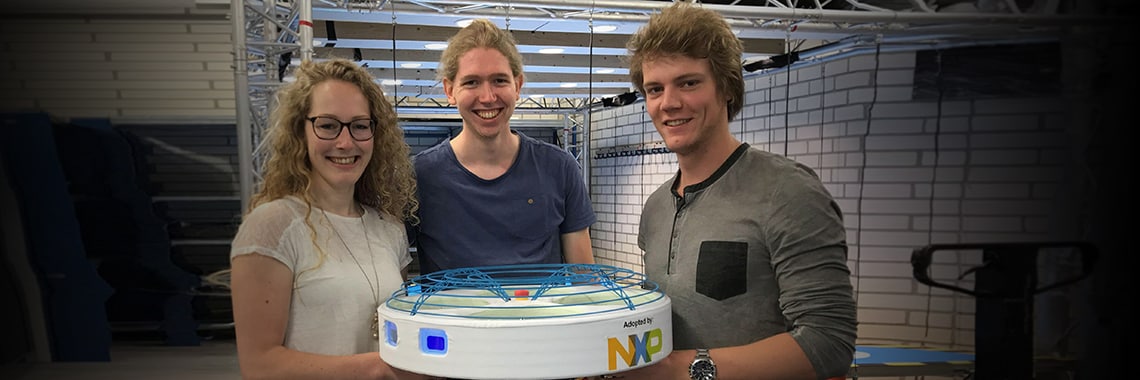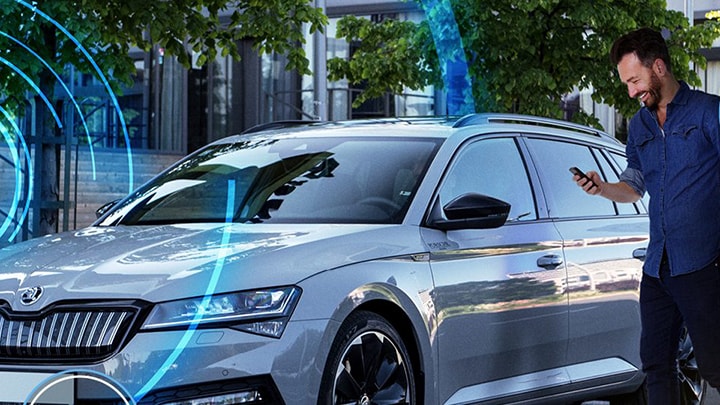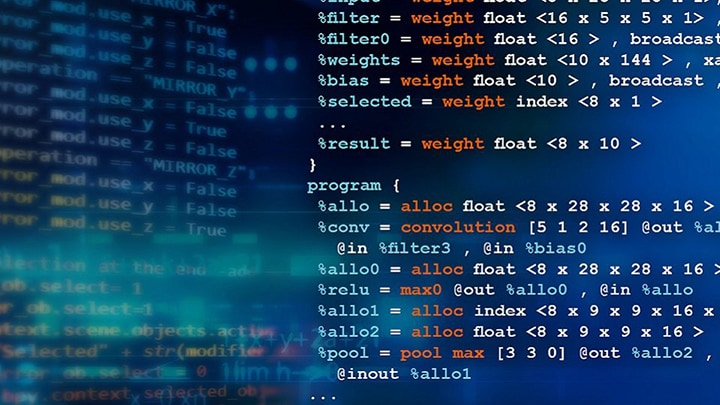Over the past two years, a team of young students at TU Eindhoven (TU/e)
have been working on the world’s first autonomous indoor drone. And
on 15 June in the Máxima Medical Center in Veldhoven, the Netherlands
they’ll be demonstrating just what their ‘Blue Jay’ can
do. They fervently believe this could be a real breakthrough, not just in
robotics but healthcare too. And they’re not alone.
So what exactly do the Blue Jay Eindhoven team hope to achieve during this
2-hour Drone Daycare demo event? “We want to show how a drone like ours
could aid caregivers with everything from distributing medicine to monitoring
patients’ health. Freeing up their time to spend on qualitative patient
care,” explains Ties Van Loon, mechanical engineering student and
Blue Jay’s Team Manager. The demonstration is primarily a fun
event for young patients, but medical practitioners and managers have also
been invited. “For Blue Jay to succeed, we need partners who can help
us identify the functionalities the drone will require. We hope this event
will inspire them to want to help us on the project going forward.”
The sky’s the limit (OK, the ceiling then)
And if you’re thinking, ‘Just how much help can drones be in a complex field like
healthcare?’, think again.
“The potential is huge,” says Iain Galloway, Drone Programs
Technical Lead at NXP, global leaders in secure connectivity, whose partnering
of Blue Jay extends to lending resources and know-how in key areas such as
microprocessors and car-to-car communication. “Imagine a small child,
instead of having to talk to a daunting (and time-pressed!) surgeon or nurse,
could tell their favorite drone how they’re feeling. The same cool
drone that flies into the kid’s ward, asks what’s her favorite
TV show, then uses Google Assistant and Chromecast to cast SpongeBob on the TV
over her bed. Equally, a drone with a thermal sensor could interface with IoT
devices in hospitals to spot, say, when a patient is too cold and turn on the
heating or call a nurse.”
Ultimately, Iain believes a drone like Blue Jay could securely access all the
relevant data on a patient’s medical history and key metrics for
monitoring their condition in order to provide highly sophisticated support to
a medical team. Improving everything from the hospital’s staff
efficiency (patient consultations via drones) to its environmental footprint
(drones turning off lights when patients fall asleep).
Professor Maarten Steinbuch, Scientific director TU/e High Tech Systems Center
and an official (and unofficial!) ‘fan’ of Blue Jay, sees even
broader spin-off benefits. “Because it’s focused on the
technical challenges of a drone operating optimally indoors, the Blue Jay
project has a heavy focus on issues like safety, secure communications and
noise reduction. And breakthroughs here could have a positive impact not only
on the whole drone industry, but the entire service robotics sector.”
You are now leaving your comfort zone
Aside from Ties, the team has more full-time members who have taken a year out
from their studies to work on Blue Jay. For example: electrical engineering
student, Iris Huijben and mechanical engineering student, Rens Nieuwenhuizen.
“One of the coolest things about working on Blue Jay,” says
Rens, who focuses on aspects like aerodynamics and lightweight design.
“is that you spend lots of time outside your comfort zone. Pretty well
everything is new.” Iris, whose duties include leading the
team’s part-time software specialists, laughs “Yeah, one of the
main lessons you learn is how, just when you think you’ve solved an
issue, things can still always go wrong!”
With most students moving on after a year, the turnover on Blue Jay is high.
But that can have major benefits. “The constant renewing of members
means the team’s always open to fresh ideas during product
development,” argues Iain. “They’re not saying:
here’s the product, take or leave it. They’re constantly seeking
feedback and exploring new ideas.” Ideas such as humanizing the drone
with a friendly face. And last year having an earlier version of Blue Jay wait
tables in the world’s first drone café.
This open mindset means the team also recognize that Blue Jay needs more than
just hardcore engineering skills. The team includes specialists in finance,
management, external relations… and two psychology and technology
majors. “Technology plays an increasingly integral role in our
lives,” explains Ties, “so it also has an increasing
psychological impact on its users.”
After all, as everyone on the Blue Jay team appreciates, healthcare is
ultimately about enhancing quality of life. Which is why they’re
delighted the 15 June event will be a family day. “We can’t
reveal too much beforehand,” says Rens, “but there will
certainly be a chance for the kids to pit their wits against our
drone.” A Turing Test for Blue Jay if ever there was one!
Learn more about
Blue Jay Eindhoven here




